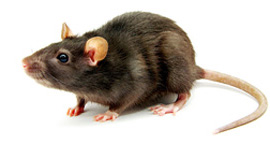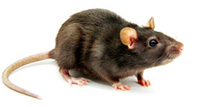
Size:
1/16 to 1/8 inches (1.5–3.2 mm)
Characteristics:
The Norway Rat is also referred to as common rat, street rat, sewer rat, Hanover rat, brown rat, Norwegian rat, or wharf rat and is one of the best known and most common rats. If you have rats on your property on Cape Cod, it is most likely a Norway Rat. It
is a rather large true murid and can weigh many times more than a house mouse. Their fur is coarse and usually brown or dark grey, while the underparts are lighter grey or brown.
Norway rats are primarily nocturnal and are good swimmers, both on the surface and underwater, and have been observed climbing slim round metal poles several feet in order to reach garden bird feeders. Norway rats dig well, and often excavate extensive burrow systems. They are social rodents and build burrows close to one another.
They often enter a home in the fall when outside food sources become scarce. These rats are known to gnaw through almost anything – including plastic or lead pipes – to obtain food or water.
Habitat:
Outdoors, Norway rats live in fields, farmlands and in structures. These rats frequently burrow in soil near riverbanks, in garbage and woodpiles, and under concrete slabs. Indoors, Norway rats often nest in basements, piles of debris or undisturbed materials. Rodents can gain entry to a home through a hole the size of a quarter.
Threats:
Norway rats can cause damage to structures through their gnawing and eating. These rats are also vectors of diseases including plague, jaundice, rat-bite fever, cowpox virus, trichinosis and salmonellosis. In addition, Norway rats can contaminate food and introduce fleas into a home.
Prevention and Control:
Norway rats are often drawn to piles of wood, so homeowners should keep firewood stored well away from the structure and remove debris piles to reduce nesting spots. For proper Norway rat control, seal any holes on the outside of the home with silicone caulk. Eliminate sources of moisture, especially in crawl spaces and basements, to get rid of Norway rats. It's also important to occasionally inspect the home for signs of a Norway rat infestation, including rodent droppings, gnaw marks, damaged goods and greasy rub marks caused by their oily fur.





